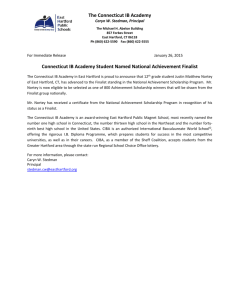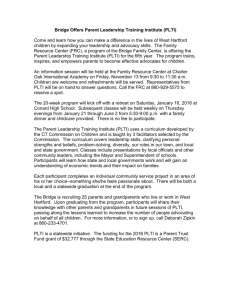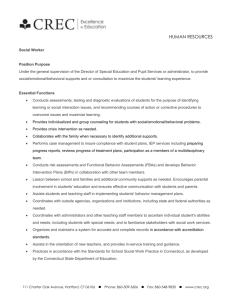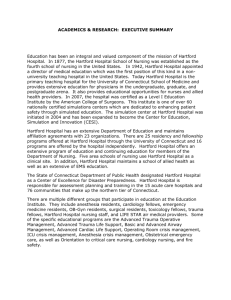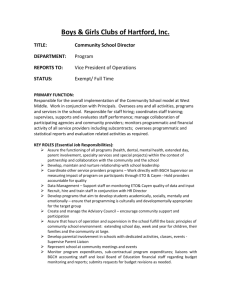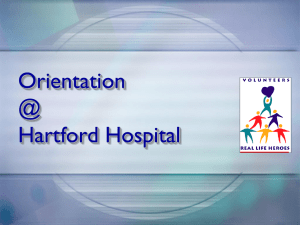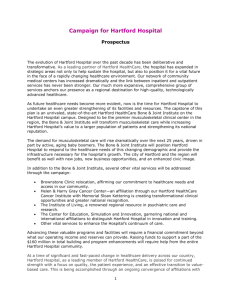HH Achievements - Home
advertisement
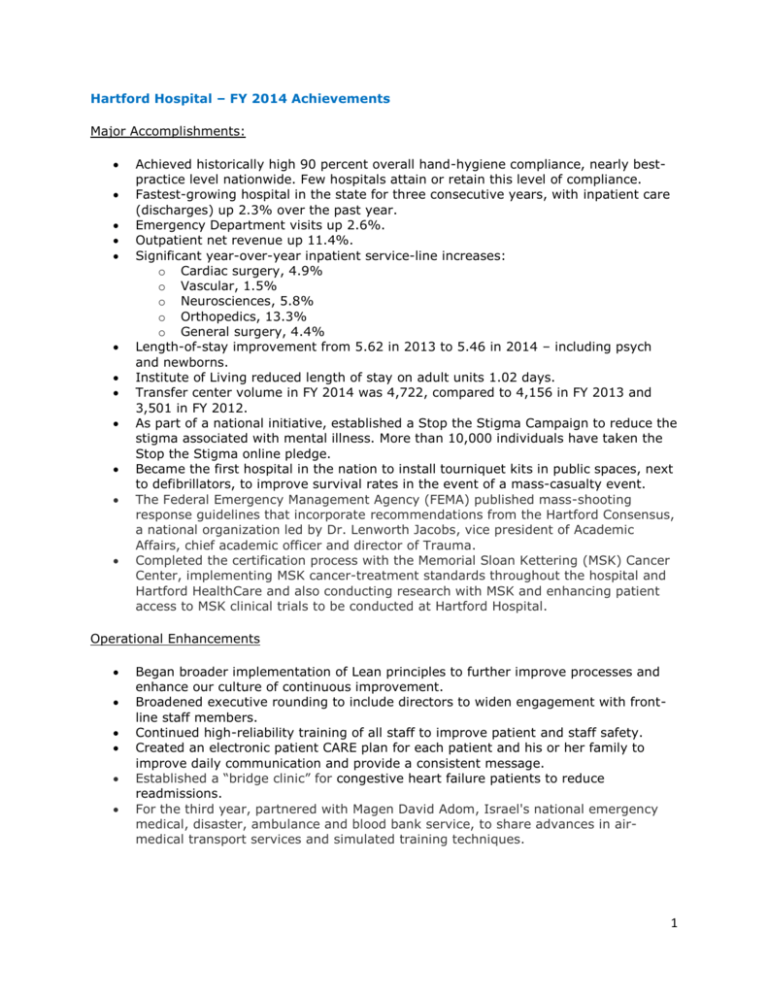
Hartford Hospital – FY 2014 Achievements Major Accomplishments: Achieved historically high 90 percent overall hand-hygiene compliance, nearly bestpractice level nationwide. Few hospitals attain or retain this level of compliance. Fastest-growing hospital in the state for three consecutive years, with inpatient care (discharges) up 2.3% over the past year. Emergency Department visits up 2.6%. Outpatient net revenue up 11.4%. Significant year-over-year inpatient service-line increases: o Cardiac surgery, 4.9% o Vascular, 1.5% o Neurosciences, 5.8% o Orthopedics, 13.3% o General surgery, 4.4% Length-of-stay improvement from 5.62 in 2013 to 5.46 in 2014 – including psych and newborns. Institute of Living reduced length of stay on adult units 1.02 days. Transfer center volume in FY 2014 was 4,722, compared to 4,156 in FY 2013 and 3,501 in FY 2012. As part of a national initiative, established a Stop the Stigma Campaign to reduce the stigma associated with mental illness. More than 10,000 individuals have taken the Stop the Stigma online pledge. Became the first hospital in the nation to install tourniquet kits in public spaces, next to defibrillators, to improve survival rates in the event of a mass-casualty event. The Federal Emergency Management Agency (FEMA) published mass-shooting response guidelines that incorporate recommendations from the Hartford Consensus, a national organization led by Dr. Lenworth Jacobs, vice president of Academic Affairs, chief academic officer and director of Trauma. Completed the certification process with the Memorial Sloan Kettering (MSK) Cancer Center, implementing MSK cancer-treatment standards throughout the hospital and Hartford HealthCare and also conducting research with MSK and enhancing patient access to MSK clinical trials to be conducted at Hartford Hospital. Operational Enhancements Began broader implementation of Lean principles to further improve processes and enhance our culture of continuous improvement. Broadened executive rounding to include directors to widen engagement with frontline staff members. Continued high-reliability training of all staff to improve patient and staff safety. Created an electronic patient CARE plan for each patient and his or her family to improve daily communication and provide a consistent message. Established a “bridge clinic” for congestive heart failure patients to reduce readmissions. For the third year, partnered with Magen David Adom, Israel's national emergency medical, disaster, ambulance and blood bank service, to share advances in airmedical transport services and simulated training techniques. 1 Facility Enhancements Opened a new post-anesthesia care unit (PACU) in Perioperative Services, providing 12 additional state-of-the-art beds. Opened CB3 as a specialized Organ Failure and Transplantation unit that provides complex, multidisciplinary care for patients with advanced organ disease and patients who are organ donors or recipients. Renovated and expanded North 9 Neurosciences Step-Down Unit, increasing capacity to care for critically ill neurosurgical and trauma patients. Began renovations to the Women’s Health Unit. Regional Expansion Began construction of the Hartford HealthCare Bone & Joint Institute, a multidisciplinary comprehensive care center, on the Hartford Hospital campus. With its close alliance with the Center for Education, Simulation and Innovation, the institute will bring the latest advances in care to patients and contribute to the growth of the hospital (freeing space for additional private rooms and other enhancements) and the economic development of the community. Opened the Farmington Family Health Center to increase access to care. Institute of Living opened an intensive outpatient program for LGBTQ individuals, the first in Connecticut. Launched an initiative to develop a Neurosciences Institute to bring together the strength and expertise of many related disciplines throughout the Hartford HealthCare system. Comprehensive Epilepsy Center celebrated its first anniversary and expanded to satellite locations in Enfield and Wethersfield. Opened the Atrial Fibrillation Center, a joint venture among the Departments of Electrophysiology and Cardiology and CT Surgery and the first in the region to offer comprehensive evaluation, management and treatment services for patients with atrial fibrillation. Expanded the LDL apheresis program, making it one of the largest in the nation. Technology/Medical Firsts Hartford Hospital was nearing its 3,000th transplant, with 2,998 transplants performed by Oct. 29, 2014; 2014 is the 30th anniversary of the program. First endoscopic submucosal dissection performed in Connecticut. First robotic minimally invasive esophagectomy performed in the state. First in the state to implant the new Medtronic loop recorder. First in the state to provide a breakthrough treatment option for patients too frail to undergo open heart surgery: MitraClip®, a device implanted through the femoral artery to treat mitral-valve disease. First in the region to implant a subcutaneous implantable defibrillator (S-ICD)® in a patient at risk of sudden cardiac arrest. First in Connecticut to use the THERMOCOOL® SMARTTOUCH® catheter, the first catheter approved by the FDA to feature contact-force technology for ablation procedures in patients with atrial fibrillation and ventricular tachycardia. The first cardioverter defibrillator (ICD) designed for use in an MRI scanner was implanted at Hartford Hospital as part of the Medtronic Evera MRI clinical trial. Hartford Hospital is the only site in New England selected for participation. Received the first post-FDA approval in the state to implant the Metronic Attain Performa and Viva Quad resynchronization therapy defibrillators, which reduce side effects from devices in patients with heart failure. 2 First LINX magnetic lower-esophageal sphincter augmentation was performed at Hartford Hospital to treat acid-reflux disease. Comprehensive Liver Center was first in Connecticut to use Fibroscan® technology, a painless alternative to liver biopsy. Eye Surgery Center was first in New England and one of the first in the Northeast to use femto-second laser technology to improve cataract surgery. Hartford Hospital surpassed 100 trans-catheter aortic-valve replacements (TAVRs). Research and Academics Research Administration established a centralized Hartford HealthCare system-wide Institutional Review Board with the highest level of accreditation from the national review board of the Association for the Accreditation of Human Research Protection Programs Inc. An Institute of Living and Genetics Research Center study received a $1.25 million grant from the Agency for Healthcare Research and Quality, the leading federal agency focused on patient care and clinical outcomes, to design and validate a personalized medicine tool to guide selection of drug therapy for major depressive disorders. Genomas celebrated its 10th anniversary. In collaboration with Cardiac Surgery and Cardiac Catheterization Laboratory clinicians, Research collaborated on four clinical-trial protocols of an investigational valve designed to improve patient outcomes of the TAVR procedure. Opened the Olin Center Annex at the Institute of Living; the center is at the forefront of neuroscience research in brain disorders in the world. Major collaborations with the National Institutes of Health, the Memorial Sloan Kettering Cancer Center and Johns Hopkins Medical School and many partnerships with drug and device clinical research trials helped advance the standard of medicine through innovative new treatments that provide more options for Hartford HealthCare patients. Center for Education, Simulation and Innovation Began 25,000-square-foot expansion to add a virtual reality lab, tissue lab and several simulated patient rooms, including a bioterrorism suite. Expansion will increase training and research capabilities and is expected to attract additional hightech industry partners. Selected for training by the Memorial Sloan Kettering (MSK) Cancer Center. Named a comprehensive Accredited Education Institute by the American College of Surgeons. Renewed a three-year contract for training U.S. Navy MDs and submarine medics. Nearly 300 Navy personnel have been trained since 2007. Received Harvey® The Cardiopulmonary Patient Simulator, another high-fidelity human patient simulator – purchased with a $71,500 grant from the Connecticut Health and Educational Facilities Authority to improve the health and education of state citizens. Launched mobile training for Jefferson House, Southington Care and Jerome Home nurses and certified nurses’ aides with the goal of reducing readmissions. More than 380 students have been trained, with a focus on congestive-heart failure, pneumonia, cardiac arrest, ISBAR communication and IV insertion, and port-a-cath care. 3 Philanthropy Launched the early phase of a campaign to raise funds for the Bone & Joint Institute and other critical components of the hospital’s facilities master plan. Formed a strong campaign steering committee of community and corporate leaders, chaired by George Estes. At the close of the fiscal year, reached nearly $36 million in commitments to the campaign, including million dollar commitments from Orthopedic Associates of Hartford, Hartford Anesthesiology Associates, Jefferson Radiology, the Hartford Hospital Auxiliary and two anonymous donors. The Hartford Hospital Campaign received support from 100 percent of Hartford Hospital’s vice presidents. The Black & Red gala raised more than $1 million for the Institute of Living. Community Benefit The hospital’s total community benefit is calculated at more than $118 million. Assisted 10 employees and their families with buying homes in the City of Hartford through our Housing Incentive Program – an investment of $100,000. Provided four community nonprofit organizations with grants to launch programs for community health. Contributed to the Hartford Promise to provide Hartford Public School students with access to higher education. Supported more than 90 nonprofit agencies in the community to address basic human needs such as shelter, community health, women’s health, behavioral health, obesity, nutrition and a host of much-needed services. Continued to participate in the Take Charge of Your Health Project, launched last year with the Omega Foundation to inspire action among black men to lead healthier lives. Project statistics include 3,100 individual encounters; 1,030 free screenings (blood pressure, cholesterol, cancer); 168 connected to primary care providers; and 75 connected to insurance. Awards and Recognition Named among the most technologically advanced hospitals in the world by Top Master's in Healthcare Administration. Awarded a “gold” designation by the U.S. Department of Health and Human Resources for raising organ-donation awareness, registering new donors and supporting donor families. Named the top hospital in the region by U.S. News & World Report with 11 banners of distinction. Listed among 100 hospitals named by Becker’s Hospital Review of “Hospitals with Great Women’s Health Programs.” Named among the Most Wired Hospitals for the seventh consecutive year by Hospitals and Health Networks. “Mobility is Medicine Project," which trains volunteers to mobilize patients, won the National Association of Rehab Agency and Providers Innovation Award. Earl Morrison, with hospital Engineering, received a prestigious Health Care Hero Award from the Hartford Business Journal for creating EARL (Early Ambulation Saves Lives), a cart enabling ICU patients to walk. Received recertification as a Comprehensive Stroke Center from the American Heart Association/American Stroke Association and the Joint Commission. 4

